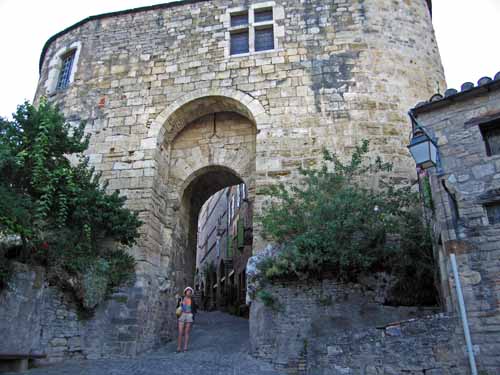These were “new towns” set up in the thirteenth and fourteenth centuries, after the Albigensian crusade had devastated the south-west of France.
The Treaty of Paris in 1229 officially put an end this conflict. Thereafter there was a move to repopulate the countryside by setting up these new towns, or bastides.
Peasants were invited to move from their scattered farms to a house in town, with attached land. The lords would make their money by rents on the land and by taxes on trade, rather than by tithes as in the old feudal system, and the tenants would no longer be serfs, but free men.
Thus bastides were an important element in the transition from feudal to modern society.
The typical layout of these new towns recalled the Roman castrum, with a central square lined with arcades and surrounded by a grid of streets.
Early bastides were not fortified, but later, as the Hundred Years War between England and France ravaged the area, they were usually walled and often defensively placed on hilltops. Many changed from English to French hands and back again during the conflict.

